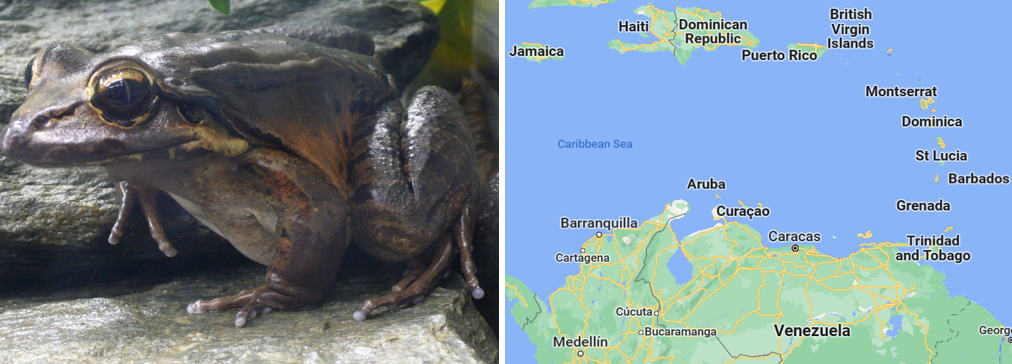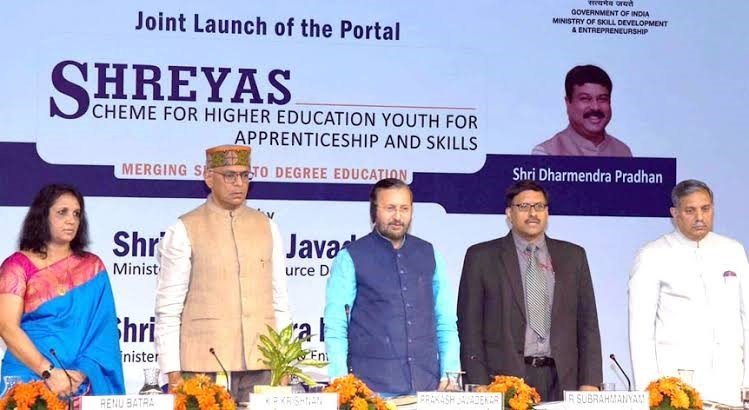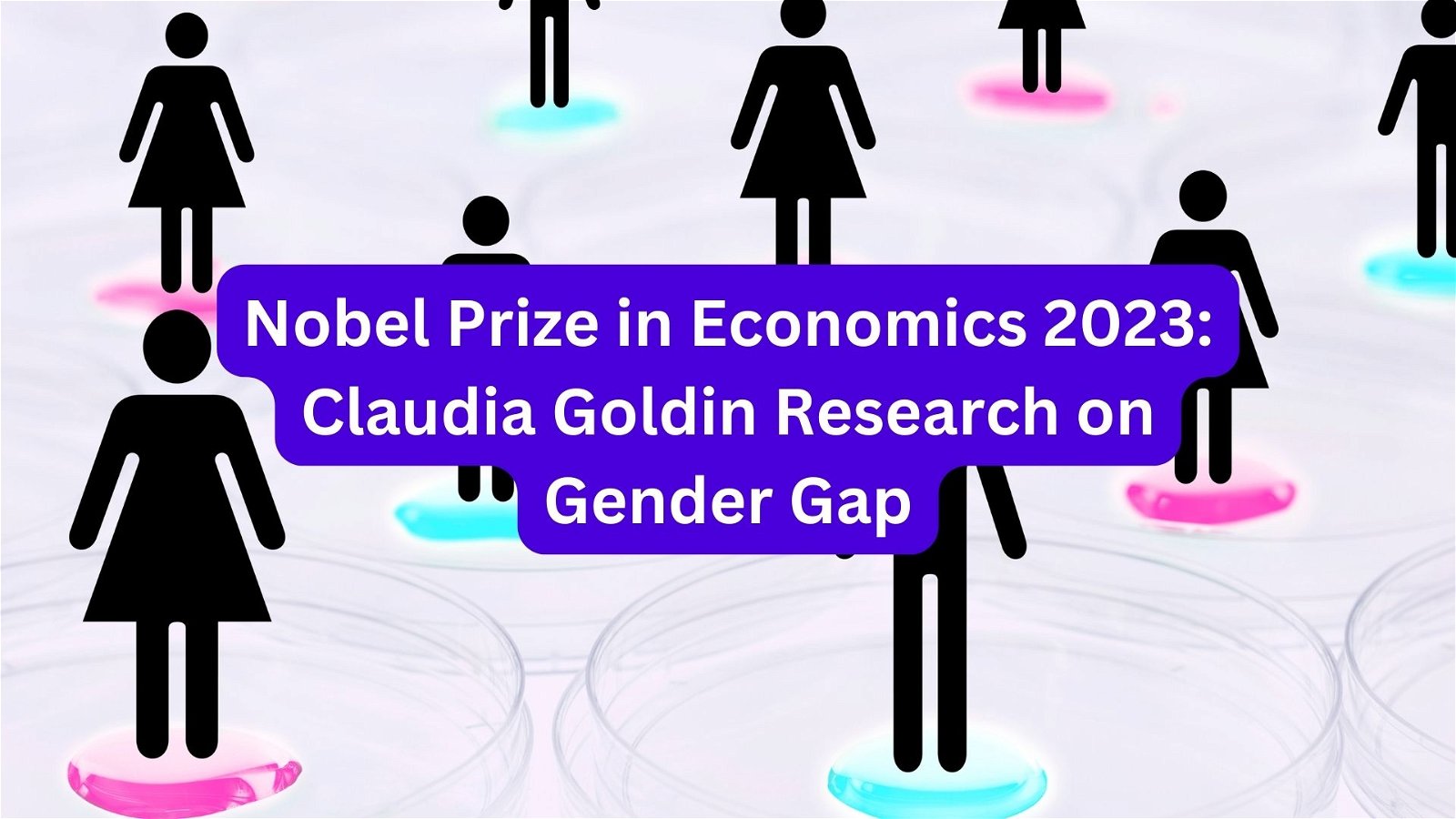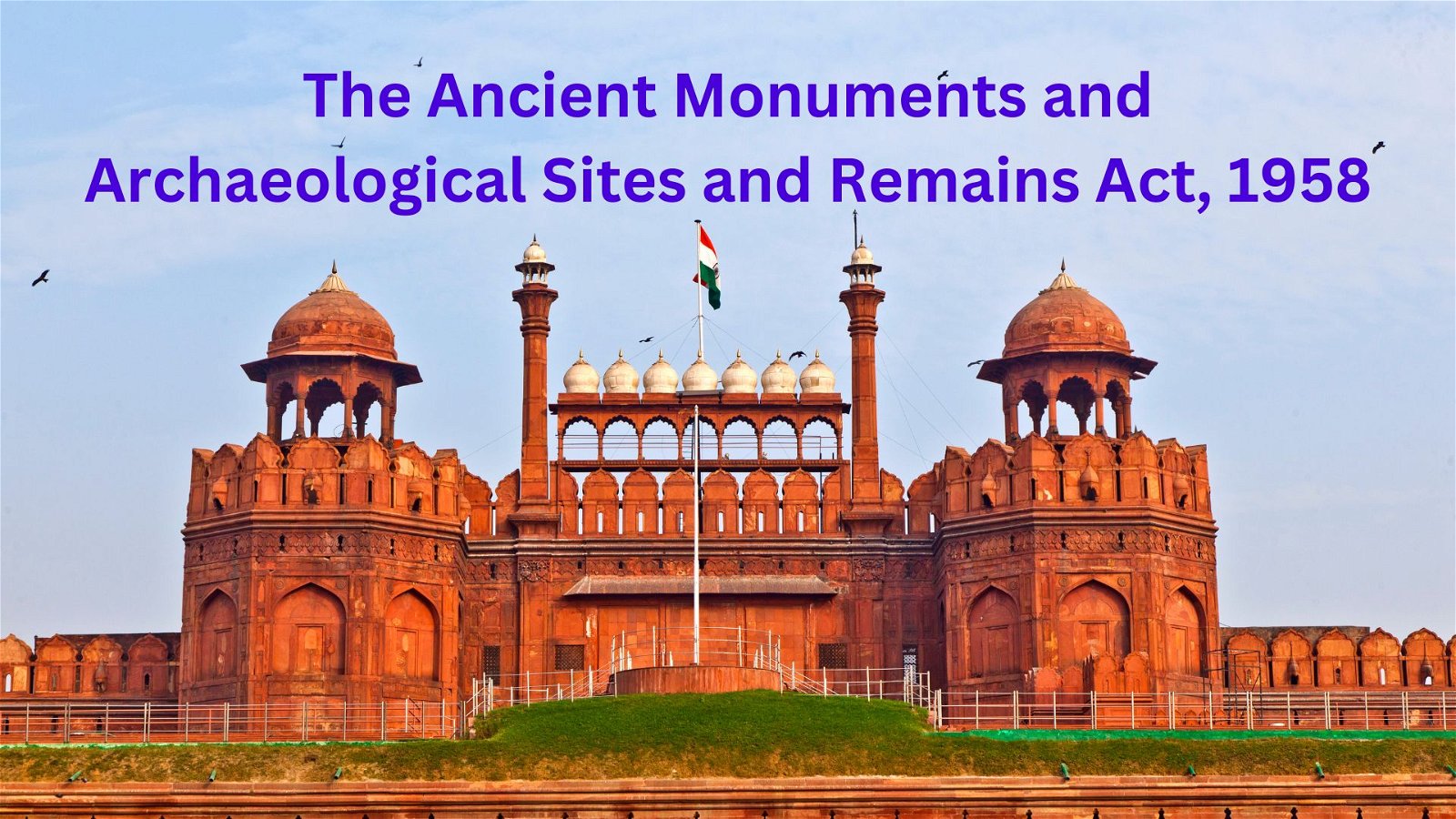
Current Affairs October 04, 2023: Nobel Prize in Physics 2023, Caste-Based Survey by Bihar, NCT of Delhi Bill 2023, Carbon-Capture Tree Plantations
Subscribers of "Current Affairs" course can Download Daily Current Affairs in PDF/DOC
Subscribe to Never Miss an Important Update! Assured Discounts on New Products!
Must Join PMF IAS Telegram Channel & PMF IAS History Telegram Channel
{GS1 – Geo – Human Geography} Circular migration
- Context (TH): Circular migration is characterised by individuals moving between their country of origin and a destination country temporarily in response to employment opportunities.
- This phenomenon is predominantly observed among low-income groups seeking seasonal employment in various locations.
Evolution of Circular Migration
- Circular migration gained prominence in the 1960s and 1970s with the rise of globalisation.
- Improved transportation and communication, the expansion of social networks, and the growth of multinational corporations boosted the circular migration phenomenon.

Effect of Circular Migration on the Economy
- For a country of origin, circular migration can lead to the flow of remittances, boosting the domestic economy. However, it may also result in brain drain.
- For destination countries, circular migration can help fill low-income, low-skill job gaps. Yet, it can also lead to concerns and cultural conflicts among host populations.
Circular Migration in India
- In India, internal migration has historically followed circular patterns.
- The movement of rural populations to urban areas for employment in manufacturing, construction, and services sectors has been common.
- The uneven development post-liberalization has led to significant inter-state migration, with some states like West Bengal, Odisha, and Bihar witnessing high out-migration rates.
Challenges for Circular Migrants in India
- Circular migrants in India often face exploitation and work in unsafe conditions.
- Language barriers in destination states pose additional challenges.
- Migrants are at the mercy of middlemen or brokers and are subject to precarious, seasonal, and irregular employment.
- The COVID-19 pandemic highlighted their vulnerability as many migrants embarked on long journeys back to their hometowns during lockdowns.
Policy Recommendations to address the issue of Migrants
- Harmonize Labor Laws to provide equal protection to all workers.
- Social Security and Health Benefits to migrants, ensuring their well-being.
- Portability of State-Provided Benefits, especially food provided through PDS.
- Skill Development Programs to enhance their employability and income potential.
- Data Collection and Research on migration patterns to inform policy-making.
- Affordable Housing and basic amenities in urban areas
- Legal framework to Protect Migrant Rights
For more info on Migration: PMFIAS NCERT Human Geography Class 11-12 CH.3 Migration
{GS2 – IR – UN} UNTOC
- Context (BS I ANI): The UN Convention Against Transnational Organized Crime (UNTOC, also called the Palermo Convention) is a UN-sponsored multilateral treaty against transnational crime.
- The UN General Assembly adopted the convention in 2000 and entered into force in 2003.
- It has 147 signatories and 191 parties to the convention.

- The seven UN member states that are not party to the convention are (* indicates that the state has signed but not ratified the convention): Republic of the Congo*, Iran*, Papua New Guinea, Solomon Islands, Somalia, South Sudan and Tuvalu.
Supplementary Protocols
- The Convention is supplemented by three Protocols, which target specific areas of organised crime:
- Protocol to Prevent, Suppress and Punish Trafficking in Persons, Especially Women and Children.
- Protocol against the Smuggling of Migrants by Land, Sea and Air.
- Protocol against the Illicit Manufacturing and Trafficking in Firearms, their Parts and Components and Ammunition.
Commitments by states under UNTOC
- Creation of domestic criminal offences (participation in an organised criminal group, money laundering, corruption and obstruction of justice).
- Adoption of new frameworks for extradition, mutual legal assistance and law enforcement.
- Promotion of training and technical assistance for upgrading the necessary capacity.
{GS2 – MoHUA – Schemes} PM SVANidhi
- Context (PIB I BS): The Prime Minister Street Vendor’s AtmaNirbhar Nidhi (PM SVANidhi) scheme has achieved a milestone of extending support to more than 50 lakh street vendors.
- PM SVANidhi is a Central Sector Scheme, i.e., fully funded by the Ministry of Housing and Urban Affairs (MoHUA).
- The scheme has the following objectives:
- To facilitate working capital loans up to Rs. 10,000
- To incentivise regular repayment; and
- To reward digital transactions
-
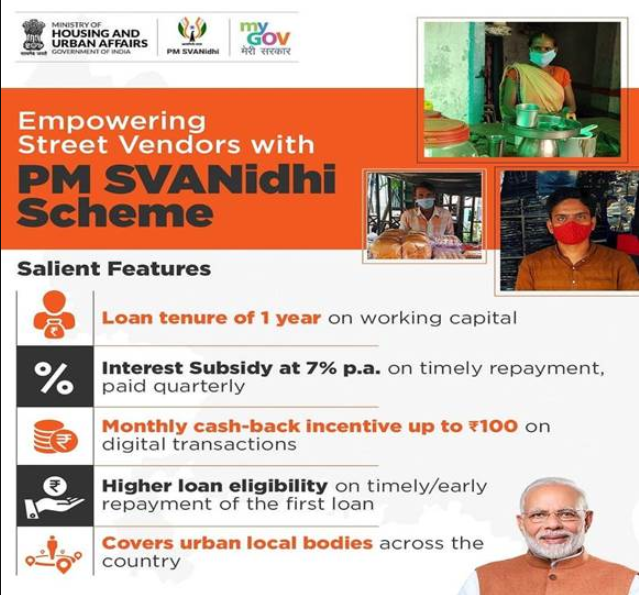
- The Scheme is available for beneficiaries belonging to only those States/UTs that have notified Rules and Scheme under the Street Vendors (Protection of Livelihood and Regulation of Street Vending) Act, 2014.
- Vendors can avail a working capital loan of up to Rs. 10,000, which is repayable in monthly instalments in the tenure of one year.
- On timely/early loan repayment, an interest subsidy @ 7% per annum will be credited to beneficiaries’ bank accounts through Direct Benefit Transfer every quarter.
- There will be no penalty on early repayment of the loan.
- The scheme promotes digital transactions through monthly cash-back of up to Rs. 100.
- The vendors can avail the facility of escalation of the credit limit on timely/early repayment.
- It is Implemented by the Small Industries Development Bank of India (SIDBI).
Small Industries Development Bank of India (SIDBI)
- SIDBI is set by an Act of Parliament as the Principal Financial Institution for the Promotion, Financing and Development of the MSME sector or similar activities.
- It is under the jurisdiction of the Ministry of Finance.
- The SIDBI was established in 1990 by the GoI as a wholly-owned subsidiary of IDBI Bank.
- It was delinked from IDBI w.e.f. March 27, 2000.
{GS2 – MoSJE – Schemes} SHREYAS
- Context (PIB): Scholarships for Higher Education for Young Achievers Scheme (SHREYAS) is an umbrella scheme to empower SCs and OBC students through education.
- It comes under the Ministry of Social Justice and Empowerment (MoSJE) and comprises four central sector sub-schemes:
- Top-Class Education for SCs
- Free Coaching Scheme for SCs and OBCs
- National Overseas Scheme for SCs
- National Fellowship for SCs
Sub- schemes
Top-Class Education for SCs
- Objective: Quality education for SC students beyond 12th grade by providing full financial support.
- Income Limit: Total family income should not exceed eight lakhs per annum.
- Coverage: 266 higher education institutes, including IIMs, IITs, NITs, and more.
- Scholarships: Total tuition fee, academic allowance, and living expenses.
Free Coaching Scheme for SCs and OBCs
- Objective: Provide quality coaching to economically disadvantaged SCs and OBCs for competitive exams and higher education.
- Income Limit: Total family income should not exceed eight lakhs per annum.
- Gender Inclusivity: 30% of slots are reserved for females in both categories.
- Allocation Ratio: The SC to OBC ratio is 70:30.
National Overseas Scheme for SCs
- Objective: Offer financial assistance for pursuing masters and PhD courses abroad to:
- Selected students from SCs
- De-notified Nomadic and Semi-Nomadic Tribes
- Landless agricultural labourers
- Traditional artisan categories
- Eligibility: Total family income should not exceed eight lakhs per annum.
- Scholarships: Total tuition fee, maintenance, visa fees, airfare, etc.
National Fellowship for SC Students
- Objective: Provide fellowships for SC students pursuing an M.Phil. / PhD in Sciences, Humanities, and Social Sciences in Indian universities.
- Qualification: Qualified National Eligibility Test (NET-JRF) or UGC-CSIR Joint Test.
{GS2 – Polity – IC – 7th Sch} Caste-Based Survey by Bihar
- Context (TH): The Bihar caste survey showed that the Other Backward Classes and the Extremely Backward Classes constituted 63% of the State’s population.
- According to the report
- The population of Bihar is 13.07 crore.
- Hindus comprise 81.9% of the population, while the Muslim share is 17.7%.
| Class/Caste | Population (%) |
| Other Backward Class (OBC) | 27.1% |
| Extremely Backward Class (EBC) | 36.01%. |
| Scheduled Caste | 19.6% |
| Scheduled Tribe | 1.68% |
| General Caste population | 15.5%. |
- This caste census may lead to the demand for the caste census at an all-India level.
- It may lead to division among OBCs at the national level.
- The Rohini Commission may propose division among OBCs as:
- Annexure I [EBC (Extremely Backward Classes)/MBC (Most Backward Classes)/BC1]
- Annexure II (OBC/BC2)
Arguments in Favour of Caste Census
- The caste data will help the government:
- To determine who requires affirmative action.
- To take affirmative steps in favour of disadvantaged sections of society.
- To assess the effectiveness of affirmative action.
- To make evidence-based policies.
- The data on caste is necessary to analyse, monitor and eradicate the caste.
Arguments against the Caste Census
- It may deepen the caste system and shift the focus away from casteless society.
- Caste may play a decisive role in politics.
Caste Census and Muslims
- The survey showed a caste system among Muslims in the State.
- Disadvantaged among Muslims may demand the reservation.
Effect on Reservation
- In the Indira Sawhney vs. Union of India case (1992), the SC accepted the 50% ceiling on reservations in jobs and educational institutions.
- This caste census can open the door for challenging the ceiling of 50% reservations in jobs and educational institutions.
The Seventh Schedule of the IC
Census and Caste data
Socio Economic and Caste Census (SECC)
|
{GS2 – Polity – IC – Federal Structure} NCT of Delhi Bill 2023 & Centre vs. State
- Context (TH): Delhi HC revokes the stay on termination of Delhi Assembly fellows.
- Fifty fellows and ninety associate fellows were hired at the Delhi Assembly Research Centre (DARC) by the Delhi Legislative Assembly.
- The Lieutenant Governor (L-G) issued the order to discontinue their services.
- The fellows challenged the L-G’s order in the Delhi HC.
- In August 2023, the Delhi HC stayed the L-G order and directed that the fellows be reinstated and their stipends paid.
- In October 2023, the Delhi HC revoked the stay order. As a result, the services of fellows and associate fellows who had resumed will now be stopped.
Why did the Delhi HC revoke its earlier order?
- The Delhi government challenged L-G’s order before the SC. The SC declined to stay the L-G’s order.
- Delhi HC, while withdrawing its interim direction, cites the SC order, which refused to say L-G’s order.
Powers to L-G: Government of National Capital Territory of Delhi (Amendment) Bill 2023
- In August 2023, the Parliament passed the Government of National Capital Territory of Delhi (Amendment) Bill 2023.
- It sought to replace the ordinance that transferred the control over civil servants serving in Delhi from the government of NCT of Delhi to the Lieutenant Governor.
Highlights of the Bill
- The bill established the National Capital Civil Services Authority (NCCSA), which consists of:
- Chief Minister
- Chief Secretary of Delhi
- Principal Home Secretary of Delhi.
- NCCSA will recommend to the L-G regarding transfers/postings of officials & disciplinary matters.
- It empowers the L-G to exercise his sole discretion on several matters, including those recommended by the NCCSA and the summoning, prorogation, and dissolution of the Delhi Legislative Assembly.
- It authorises department secretaries to notify the L-G, the CM, and the Chief Secretary of any matter that may bring the Delhi Government into controversy with the Central Government.
Centre vs. Delhi Government
- According to the National Capital Territory of Delhi (Amendment) Act, 2021, the “government” in Delhi means the “Lieutenant Governor”.
- The L-G’s opinion shall be obtained before the government takes any executive action based on decisions taken by the Cabinet or any individual minister.
- It gives primacy to the Lieutenant Governor (L-G) over the elected government in the city.
SC verdict
- SC held that the elected govt of Delhi has legislative and executive power (Including control over bureaucrats) in NCT Delhi except on matters such as Public order, police, and Land.
- The SC judgement limited the role of the L-G over bureaucrats in the capital to three specific areas — public order, police, and land.
- SC said a “triple-chain of collective responsibility” existed in the governance of the capital:
- Civil service officers are accountable to ministers.
- Ministers are accountable to Parliament/legislature.
- Parliament/legislature is accountable to the electorate.
Centre’s ordinance to negate Supreme Court order
- The Centre brought an ordinance designating the L-G as the administrator of Delhi, who will have the final say on the postings and transfer of all bureaucrats serving the Delhi government.
Way forward
- The bureaucrats have to come under the control of the Delhi government. Otherwise, its responsibility towards the legislature and the public is diluted.
Article 239AA of the Indian Constitution
|
{GS3 – Envi – Conservation} Carbon-Capture Tree Plantations
|
How Carbon-Capture Tree Plantations Threaten Tropical Ecosystem
Monoculture Plantations
- Society has reduced the value of tropical ecosystems to just one metric, carbon sink, despite their diverse functions and services.
- This oversight results in monoculture carbon-capture plantations (a single tree species is planted on a large scale).
Problems with Monoculture Tree Plantations
- Reduced Biodiversity: They disrupt local flora and fauna and reduce their diversity. This can make the ecosystem less resilient and lead to the loss of vital services like pollination and pest control.
- Pest and Disease Susceptibility: They can be highly susceptible to specific pests and diseases that target the dominant tree species. So, these plantations may require increased pesticide use.
- Soil Degradation: Growing the same plant species continuously depletes soil nutrients, leading to soil degradation and potential reliance on environmentally harmful synthetic fertilisers.
- Environmental Impact: These plantations can also directly degrade ecosystems by reducing stream flow, depleting groundwater, and acidifying soils.
- Social and Economic Issues: Such plantations can cause rural poverty and food insecurity in affected communities by reducing the forest resources on which they depend.
Reforestation Rather Than Afforestation
- Carbon-capture plantations often involve afforestation (planting in non-forest areas) in tropical grasslands and savannas rather than reforestation (planting trees in damaged forests).
- Grasslands and savannas are existing carbon sinks that store significant carbon below ground.
- Below-ground carbon sinks in grasslands and savannas are less vulnerable to disturbances like drought and fire than above-ground carbon-capture tree plantations.
Commercial Plantations
- Most trees used in these monoculture carbon-capture plantations are commercial tree species.
- They are dominated globally by five tree species, teak, mahogany, cedar, silk oak, and black wattle, grown for timber, pulp, or agroforestry.
- Although these plantations might be economically valuable, they usually support a lower level of biodiversity. For example, in the Brazilian Cerrado savanna, a 40% increase in woody cover reduced the diversity of plants and ants by approximately 30%.
Way Ahead
- Protect existing forests: Preserving intact old forests is ideal, as undisturbed forests are superior at carbon absorption and more resistant to fire, storms, and droughts.
- Involving local communities in tree-planting projects: It is crucial for the success of tree-planting projects because they often stand to benefit the most from future forest conservation.
- Maximise biodiversity recovery to meet multiple goals: Reforestation should pursue multiple goals like countering climate change, enhancing conservation, economic benefits, etc.
- Select the right area for reforestation: Plant trees in historically forested, degraded areas rather than using other natural habitats like grasslands or wetlands.
- Use natural forest regrowth wherever possible: Letting trees grow back naturally can be cheaper and more efficient than planting trees.
- Select the suitable tree species that can maximise biodiversity: Choosing the right trees is vital in tree planting. Experts recommend a mix of local tree species, including rare and economically valuable ones, while avoiding potentially invasive species.
- Select trees that are resilient to climate change: Use trees that are suitable for the local climate and also resilient to adapt to a changing climate,
{GS3 – S&T – BioTech} Nobel 2023: Trouble With a Nobel for mRNA Vaccines
- Context (TH): The 2023 Nobel Prize for Medicine was awarded to Katalin Karikó and Drew Weissman for developing mRNA vaccine technology that became the foundation for history’s fastest vaccine development programme during COVID-19.
- The Nobel prizes acknowledge work that benefits “for all mankind”, but the subset of mRNA vaccines used during the COVID-19 pandemic might not fully meet this standard.
Reasons Supporting the View That mRNA COVID Vaccines Have Not Benifitted All Mankind
Research with Public Funds But Lincensing to Private Companies
- The research for mRNA technology was carried out at the expense of public funds. But the University under which the scientists were carried out the research licensed its patents to a private company.
- Finally the patents of the mRNA was sublincensed to Moderna and BioNTech who developed the mRNA COVID-19 vaccines.
Limiting the Access of the Vaccines
- Moderna and Pfizer prioritized their own supply of mRNA COVID-19 vaccines before allowing exports to the rest of the world.
- These vaccines use in other countries (including India) was also complicated by protracted negotiations over pricing and liability.
Failure of COVAX
- COVAX, the programme to ensure poorer countries did not become the victims of their subpar purchasing power and had sufficient stocks of vaccines, fell far short of its targets.
- Reason behind this is that Covax snubbed mRNA vaccines because of their high price.
Other Reasons of Failure of COVAX
|
The Counterexample: Corbevax
- A counterexample to the path that mRNA COVID-19 vaccines followed is Corbevax.
- Corbevax is a protein subunit COVID-19 vaccine developed by Texas Children’s Hospital Center for Vaccine Development and Baylor College of Medicine in Houston, Texas.
- They did not patent it and licensed it to India’s Biological E for manufacturing.
- In 2022, a Texas politician nominated the vaccine developers for a Nobel Peace Prize for their efforts in creating and distributing a low-cost COVID-19 vaccine worldwide without patent restrictions.
Patent
|
|||||||||||||||
mRNA Vaccines
Advantages of mRNA Vaccine
Disadvantages of mRNA Vaccines
|
For details on Nobel Prize in Medicine 2023 > PMF IAS CA 3rd October 2023
- Coronavirus, Coronavirus Disease 2019 (COVID-19 or 2019-nCoV)
- Immune System, T– Cells & Coronavirus, Cytokine storm
- Proposed Vaccines, Treatments in the Context of COVID-19
{GS3 – S&T – Tech} Nobel Prize in Physics 2023
- Context (TH | IE | IE): France’s Pierre Agostini, Hungarian-Austrian Ferenc Krausz, and French-Swedish Anne L’Huillier won the Nobel Prize in Physics for the discovery of attosecond pulses that enable the study of electrons inside atoms and molecules.
|
Why the Study of Electrons was Difficult?
- Atoms, the basic building blocks of all matter, comprise three basic types of subatomic particles:
- positively charged protons
- negatively charged electrons
- neutral neutrons
- The protons and neutrons form the atom’s nucleus, and electrons travel around this nucleus.

- Electrons move so fast that it is impossible to observe them in real-time.
Attosecond Physics: Used by the Nobel Laureates to Observe Electron Movement
- To observe any process, the measurement must be made faster than its rate of change.
- For example, A regular camera blurs a moving train, but a high-speed camera can freeze the motion and capture a clear image.
- Light pulses, the only plausible tool to capture processes at the atomic level, cannot be made indefinitely shorter.
- Light is composed of waves; the shortest pulse must be at least one wavelength long.
- In laser-produced light, the shortest pulse takes a few femtoseconds.
- Femtosecond pulses enabled the observation of movements at atomic or molecular level.
- But at the subatomic level, electron movement is 100 to 1,000 times faster than atoms.
- So, observation of electron movement has not been possible so far.
- Now, these Nobel Laureates enabled the production of attosecond light pulses, allowing observation of electron movements.
|
Why is the Discovery of Attosecond Light Pulses Important?
- Attosecond science, by unravelling electron-driven mechanisms, has broad applications in physics, chemistry, and biology.
- Examples:
- Studying blood’s molecular changes for disease identification.
- Development of efficient gadgets.
- Finding therapies for cancer care.
{Prelims – Envi – Species} Hangul Rutting Season
- Context (HT): Entry to Dachigam National Park is suspended as the Hangul rutting season begins.
- Rutting is the mating behaviour of certain mammals, like deer and ungulates.
- During the rutting season, males engage in aggressive and territorial behaviours to compete for the attention of females.
Hangul (Cervus hanglu hanglu)
- Hangul (or Kashmir stag) is the only Asiatic survivor or sub-species of Elk (the largest subspecies of Red deer, found in North America and Central Asia).
- It is the state animal of Jammu & Kashmir.
- Distribution: It is endemic to Kashmir and is now restricted to the Dachigam National Park. Previously, it was found in the mountains of Kashmir and Himachal Pradesh’s Chamba district.
- Habitat: Inhabits mountainous areas; spends summers in alpine meadows and winters in valleys.
- Threats: Habitat destruction, over-grazing by domestic livestock, and poaching.
- Conservation Status: IUCN: CR | CITES: Appendix I | CMS: Appendix I | WPA: Schedule I
- It is listed under the Species Recovery Programme of the Wildlife Institute of India (WII) and the Environmental Information System (ENVIS) of the MoEF&CC.
- In the 1970s, the J&K Government along with the support of IUCN and World Wildlife Fund (WWF) prepared a project for the protection and conservation of Hangul called Project Hangul.
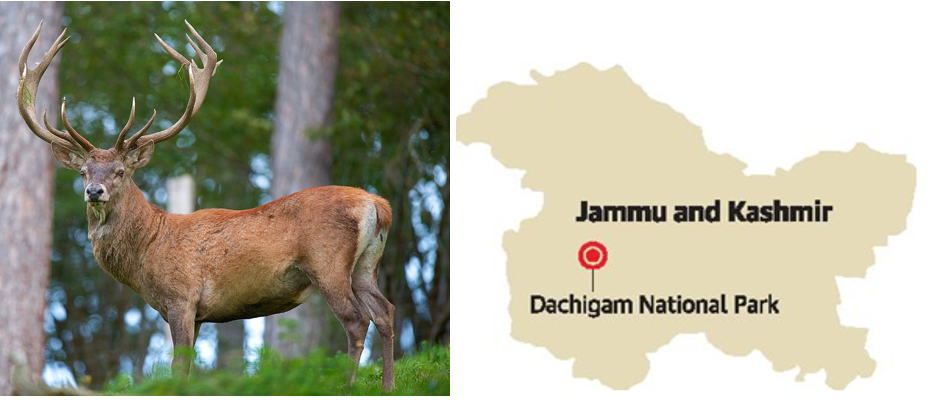
Dachigam National Park
- It is located in the Zabarwan Range of Western Himalayas.
- Vegetation: Coniferous forest, alpine pastures, meadows, and scrub vegetation.
- Major Fauna: Kashmiri stag (hangul) (CR), musk deer (EN), Himalayan serow, Kashmir grey langur, Himalayan black bear, Himalayan brown bear.
{Prelims – IE – Industry} Purchasing Managers Index (PMI)
- Context (TH): India’s manufacturing activity slowed in September, reaching a five-month low. This was reflected in the S&P Global Purchasing Managers’ Index (PMI), a seasonally adjusted index.
- PMI indicates the economic health of both the manufacturing and service sectors.
- PMI of India is compiled by London-based IHS Markit and published by Japanese firm Nikkei.
- It is derived from monthly surveys of about 400 private companies.
- PMI >50 implies expanding economic activity, and <50 implies contracting economic activity.
- The PMI for September dropped to 57.5 from 58.6 in August, indicating an overall increase in manufacturing activity, albeit slower than the previous month.





![PMF IAS Environment for UPSC 2022-23 [paperback] PMF IAS [Nov 30, 2021]…](https://pmfias.b-cdn.net/wp-content/uploads/2024/04/pmfiasenvironmentforupsc2022-23paperbackpmfiasnov302021.jpg)




